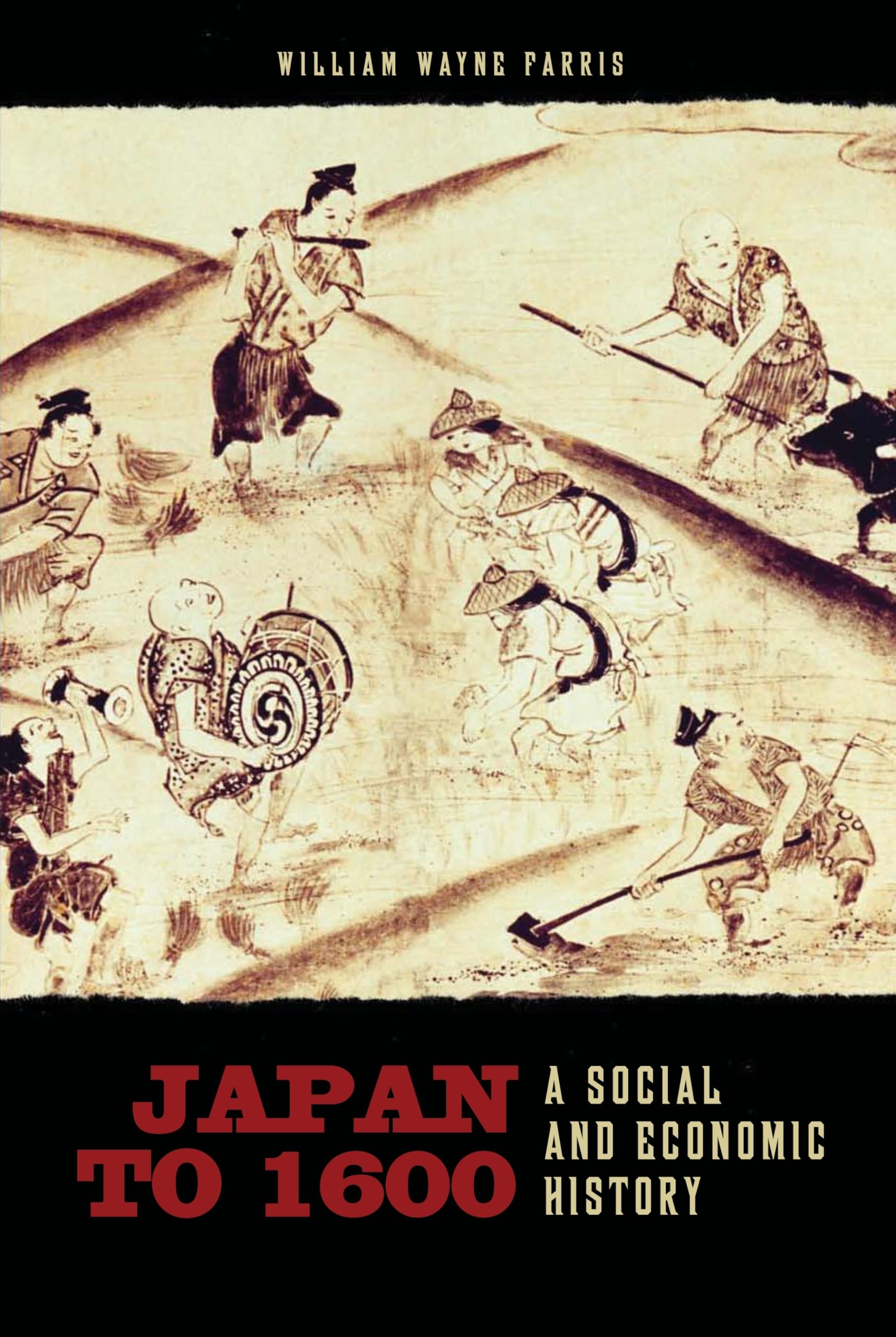
Title

Japan to 1600: A Social and Economic History,Used
Processing time: 1-3 days
US Orders Ships in: 3-5 days
International Orders Ships in: 8-12 days
Return Policy: 15-days return on defective items
Japan to 1600 surveys Japanese historical development from the first evidence of human habitation in the archipelago to the consolidation of political power under the Tokugawa shogunate at the beginning of the seventeenth century. It is unique among introductory texts for its focus on developments that impacted all social classes rather than the privileged and powerful few. In accessible language punctuated with lively and interesting examples, William Wayne Farris weaves together major economic and social themes. The book focuses on continuity and change in social and economic structures and experiences, but it by no means ignores the political and cultural. Most chapters begin with an outline of political developments, and cultural phenomenaparticularly religious beliefsare also taken into account. In addition, Japan to 1600 addresses the growing connectedness between residents of the archipelago and the rest of the world.Farris describes how the early inhabitants of the islands moved from a forager mode of subsistence to a more predominantly agrarian base, supplemented by sophisticated industries and an advanced commercial economy. He reveals how the transition to farming took place over many centuries as people moved back and forth from settled agriculture to older foragercollector regimes in response to ecological, political, and personal factors. Economics influenced demographics, and, as the population expanded, the class structure became increasingly complex and occupational specialization and status divisions more intricate. Along with this came trends toward more tightly knit corporate organizations (village, city, market, family), and classes of servants, slaves, and outcastes formed.In reflecting the diversity of traditional Japans economy and society, Japan to 1600 is well suited for both undergraduate and graduate courses and will be a welcome introduction to Japans early history for scholars and students of other disciplines and regions.
⚠️ WARNING (California Proposition 65):
This product may contain chemicals known to the State of California to cause cancer, birth defects, or other reproductive harm.
For more information, please visit www.P65Warnings.ca.gov.
- Q: What is the main focus of 'Japan to 1600: A Social and Economic History'? A: 'Japan to 1600' surveys Japanese historical development, emphasizing social and economic changes that affected all classes, rather than just the elite. It covers the transition from foraging to agrarian societies and explores how these changes influenced demographics and class structures.
- Q: Who is the author of this book? A: The author of 'Japan to 1600: A Social and Economic History' is William Wayne Farris, a scholar known for his expertise in Japanese history.
- Q: How many pages does the book have? A: 'Japan to 1600' contains 248 pages, providing a comprehensive overview of Japan's early history.
- Q: What type of binding does this book have? A: The book is bound in perfect binding, which is suitable for both durability and readability.
- Q: Is 'Japan to 1600' suitable for academic courses? A: Yes, this book is well-suited for both undergraduate and graduate courses, making it a valuable resource for students and scholars of Japanese history.
- Q: When was 'Japan to 1600' published? A: 'Japan to 1600: A Social and Economic History' was published on April 27, 2009.
- Q: What unique perspective does this book provide? A: The book uniquely focuses on the social and economic structures of traditional Japan, analyzing how these elements influenced various aspects of life, rather than solely political or cultural topics.
- Q: Does the book include illustrations? A: Yes, 'Japan to 1600' is an illustrated edition, which enhances the reader's understanding of the historical context.
- Q: What are the key themes discussed in 'Japan to 1600'? A: Key themes include the transition from foraging to agriculture, the complexity of class structures, and the interconnectedness of Japan with the rest of the world during this period.
- Q: What kind of readers would benefit from this book? A: 'Japan to 1600' is beneficial for students, scholars, and anyone interested in understanding Japan's early history, particularly those studying economic and social history.

